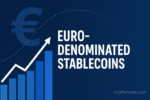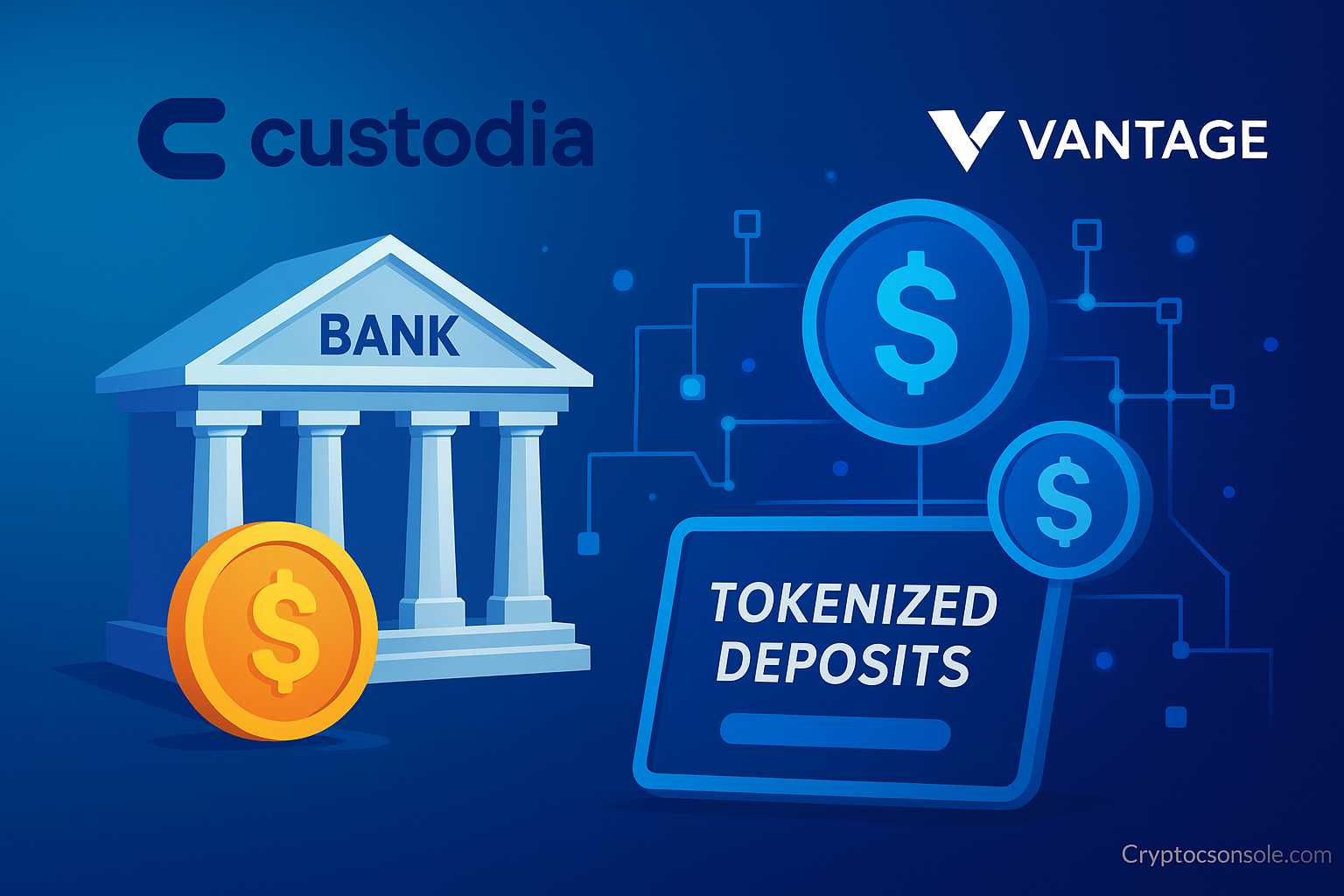Crypto-friendly banks Custodia Bank and Vantage Bank have jointly launched a turnkey blockchain platform that allows traditional banks to issue tokenized deposits which interoperate with stablecoins while retaining deposit control, according to multiple reports.
What the platform offers
- The solution enables banks of all sizes to issue digital3 tokens which represent real U.S. dollar deposits held by the banks, (i.e., tokenized deposits) and to transact interoperably with stablecoins on blockchain rails.
- The new framework leverages Custodia’s bank-grade blockchain infrastructure and Vantage’s Interlace payment network.
- According to Custodia and Vantage, the platform is patent-protected, keeps core deposits controlled by the bank (avoiding disintermediation risk), and allows “near-instant, low-cost transactions” among banks and clients.
Why it matters
- Bridging TradFi & DeFi: The platform marks a significant step in bringing traditional banks into the world of tokenized assets/stablecoins rather than treating them purely as separate crypto entities.
- Deposit retention & competition: As stablecoins grow, banks face pressure from disintermediation (i.e., customers moving to non-bank digital assets). Tokenized3 deposits help banks stay competitive and keep customer funds.
- Regulatory alignment: The platform appears to align with the U.S. regulatory movement (e.g., the GENIUS Act) to provide clearer frameworks for stablecoins and bank-issued digital assets.
- Interbank (+ cross-border) capability: By enabling banks to transact tokenized deposits and stablecoins between each other, the infrastructure may reduce friction in payments, settlement and inter-bank transfers.
Key details & pilot uses
- The announcement came on Oct. 23, 2025, when Custodia and Vantage disclosed the consortium/platform for community and regional banks in the U.S.
- The banks cite use-cases such as cross-border payments, construction milestone disbursements and supply chain settlement, demonstrating that tokenized deposits are not just theoretical but being piloted.
- The tokenized deposit framework claims to allow banks to issue tokens where each token is backed 1-for-1 by real dollar deposits or equivalent assets held by the bank, ensuring regulatory compliance and reserve backing.
Risks & considerations
- Regulatory & supervisory oversight: Tokenizing deposits blurs the line between banking and digital-asset services; banks and regulators will need clear frameworks for custody, audits, AML/KYC and token governance.
- Operational and technical risk: Banks issuing tokenized deposits must manage wallets, smart-contracts, redemption procedures and maintain parity with underlying deposits — complexity and potential for error increase.
- Interoperability & adoption challenge: While the platform offers interoperability, uptake by banks (especially smaller community banks) will depend on cost, technology readiness and regulatory comfort.
- Competition from stablecoins and fintechs: Tokenized8 deposits may face competition from private stablecoins or fintech payments rails which may have different cost structures or regulatory burdens.
What to watch next
- How many banks (especially community & regional banks) sign up for the platform and begin issuing tokenized deposits.
- Regulatory commentary from U.S. banking supervisors (e.g., FDIC, OCC) on this model of tokenized deposits and bank-issued tokens.
- Demonstration of scale: how many tokens are issued, redeemed and transacted between banks, and whether cross-border use grows.
- Whether depositors view tokenized deposits as materially different (e.g., in risk or cost) compared to traditional deposit products or stablecoin exposure.
- Competitive response: whether other banking or fintech consortia launch similar platforms, and how this influences bank deposit strategy and digital-asset integration.
Bottom line
The launch of the Custodia-Vantage Bank platform for tokenized deposits represents a meaningful advance for traditional banking’s integration with blockchain and stablecoin infrastructure. By enabling banks to issue tokenized representations of deposits (while retaining control), the solution offers a route for banks to participate in the digital-asset ecosystem without ceding their role. However, scalability, regulatory clarity and adoption remain challenges. As tokenization increasingly enters mainstream banking, the success of this initiative could influence how deposit funds, payments and banking services evolve in the coming years.
7NAWE54H












